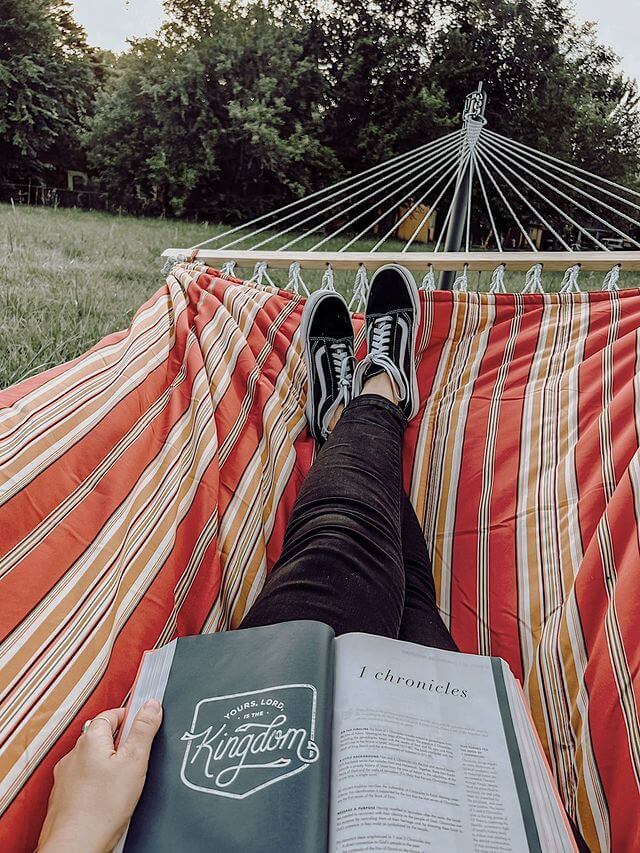
SUNCREAT - July 11 2022
#What We Create: Blaze Family
Blaze family, known as @ourfamilyadventures on Instagram with over 100,000 followers, loved and have traveled the world with many memories. We were excited to know their colorful experience and opinions about travel and outdoor activities!
Here's our interview:
Hi, we've followed you on social media, but please introduce yourself to everyone, especially new friends.
We are the Blaze family! I’m Tiffany, and my husband is Jacob. We have 3 kids: Taylor (23), Ocea (7), and Cedar (5). We typically travel 4-5 months of the year, but our home base is in Franklin, TN.

What countries and cities have you been to? Which place do you like best and why?
As of this month, we have been to 48 states with our two littles. We just took them to Minnesota, and we loved it so much we are already planning our next trip back. My husband and I have been to several countries individually, but we’ve taken the little ones to Canada, Iceland, and Mexico so far. We are dying to get them to Ireland because that’s been our absolute favorite.

What made you want to take a camera to record your life and post them on social media?
I naturally love taking videos of my kids to have when they’re older. Combine that with a love of photography, and that’s how we ended up here. It’s also been really fun to share our story and remind others that it is possible to travel with kids. It’s actually super enjoyable!

What does outdoor life mean to you? What is the most memorable time you spent outdoors?
We believe an outdoor life is a life well-lived. From the fresh air to the scenic views, it’s a perfect place for our children to explore God’s creation. I’d have to say one of our most memorable days would be the day we took a boat out on Lake Powell. I remember our whole family being in awe the entire time.

SUNCREAT - June 13th 2023
Hanging a Hammock on Trees:
Does it Harm the Trees and How to Do it Without Causing Damage
Hammocks are a popular way to relax and unwind in nature, providing a comfortable and serene experience. However, concerns have been raised about the potential harm hammocks can cause to trees. This article aims to address the question: Will hammocks kill trees? Additionally, we will explore eco-friendly alternatives and provide guidelines on how to hang hammocks without harming the trees.
Understanding the Impact:
While it's true that improperly installed or frequently used hammocks can cause damage to trees, it is not the hammocks themselves that are to blame. Instead, it is the way in which they are installed or the prolonged stress they can impose on tree bark that can lead to harm.
Bark Damage: If ropes or cords are tightly wrapped around the tree trunk, they can damage the bark, which is essential for the tree's health. This can lead to the entry of pathogens and insects, compromising the tree's vitality.
Strain on Limbs: Improperly positioned hammocks can put excessive strain on tree limbs, especially if the weight is unevenly distributed. This can lead to limb breakage, affecting the tree's stability.
Trees are living organisms with a complex biological system that allows them to thrive in their environment. Their bark serves as a protective layer, shielding the delicate inner tissues from external factors. When hammocks are hung carelessly, the pressure exerted on the bark can lead to abrasions, weakening the tree's defense mechanisms against pests, diseases, and environmental stressors.
Guidelines for Hanging a Hammock Without Damaging Trees:
1.Choosing the Right Trees:
Selecting the appropriate trees is the first step in responsibly hanging a hammock. Consider the following factors when choosing trees:
a. Strong and Mature Trees: Opt for mature trees with sturdy trunks and healthy branches. Avoid young or weak trees that may not be able to handle the weight of the hammock.
b. Tree Species: Some tree species are more resilient to stress and can better withstand the weight of a hammock. Trees such as oak, maple, beech, and sturdy conifers are generally good choices.
c. Tree Health: Inspect the tree for signs of disease, decay, or insect infestation. Choose trees that are in good overall health and show no obvious signs of distress.
2.Utilizing Tree-Friendly Suspension Systems:
Using tree-friendly suspension systems is crucial for minimizing damage to trees. Here are some recommendations:
a.Tree Straps: Opt for wide tree straps made from soft, non-abrasive material. These straps distribute weight evenly and reduce the risk of bark damage caused by friction.
If you are an absolute beginner of hammock and don't know how to use tree straps, the following illustration will help you a lot.

b. Avoid Thin Ropes: Avoid using thin ropes or cords directly on the tree trunk, as they can cause excessive pressure and damage the bark.
c. Protective Sleeves: Wrap the tree straps with protective sleeves made of fabric or foam. This creates a cushioning effect and prevents the straps from digging into the bark.
d. Carabiners or S-Hooks: Use carabiners or S-hooks to attach the hammock to the straps. These tools provide easy adjustability while minimizing potential damage to the tree.
3.Protecting the Tree Bark:
Protecting the tree bark is crucial to maintaining the tree's health and preventing damage. Follow these steps:
a. Wrap the Tree Straps: Place the tree straps at least 6-8 feet above the ground and wrap them around the tree trunk several times. This helps distribute the weight more evenly and reduces pressure points.
b. Padding for Extra Protection: Consider using additional padding, such as pieces of carpet or foam, between the straps and the tree bark. This provides an extra layer of protection against friction.
4.Proper Hanging Techniques:
Properly hanging your hammock ensures stability, comfort, and tree safety. Consider the following:
a. Proper Height: Hang your hammock at a suitable height to avoid excessive strain on the tree and branches. The ideal height allows for a gentle sag in the middle of the hammock when occupied.
b. Even Weight Distribution: Ensure that the weight is evenly distributed across the suspension points. This minimizes stress on individual branches and maintains balance.
c. Angle of Hang: Hang the hammock at a moderate angle, approximately 30 degrees, to provide stability and prevent excessive strain on the tree.
5.Regular Inspection and Maintenance:
Regularly inspect your hammock setup and make any necessary adjustments. This helps prevent potential damage to the trees and ensures your continued enjoyment. Consider the following:
a. Periodic Check-ups: Inspect the straps, tree bark, and hammock for any signs of wear, tear, or damage. Replace worn-out straps or any components that show signs of deterioration.
b. Rotation and Rest Periods: To minimize long-term impact, periodically rotate the attachment points on different trees. Additionally, avoid leaving the hammock hanging on the same trees for extended periods, allowing them time to recover.
c. Seasonal Considerations: Be mindful of seasonal changes that can affect tree health. During periods of high wind, storms, or heavy snow, it's advisable to remove the hammock to prevent potential damage to both the trees and the hammock.
d. Pruning and Trimming: Regularly trim any dead or weak branches around the hammock area. This reduces the risk of falling branches and helps maintain the overall health and safety of the tree.
6.Exploring Alternative Hanging Options:
Alternatives to Hanging a Hammock on Trees: While hanging a hammock on trees is a popular choice, there are alternative options that can provide a comfortable and relaxing experience without causing harm to the trees.
a. Freestanding Hammock Stands: Consider investing in a freestanding hammock stand. These stands are designed to support hammocks without the need for trees. They are adjustable, portable, and easy to set up, providing a convenient solution for those who do not have suitable trees or prefer not to use them.
b. Hammock Posts: Another option is to install hammock posts or poles in your yard. These sturdy posts can be set up securely and provide a stable support for your hammock. Make sure to follow the manufacturer's instructions for proper installation.
c. Hammock Chairs: If space is limited or you prefer a more compact option, consider using a hammock chair. These hanging chairs can be attached to a porch or patio ceiling, offering a comfortable seating option without the need for trees.
d. Hammock Tents: For adventurous campers, hammock tents provide an excellent alternative to traditional tents. These lightweight tents are suspended between trees using specialized straps, allowing you to sleep comfortably off the ground while minimizing impact on the trees.
Hanging a hammock without damaging trees is a responsible and environmentally conscious approach to outdoor relaxation. By carefully selecting suitable trees, utilizing tree-friendly suspension systems, protecting the tree bark, and following proper hanging techniques, you can enjoy the tranquility of a hammock while ensuring the health and well-being of the trees. Alternatively, explore the use of hammock stands, posts, or wall anchors as sustainable alternatives. By practicing these guidelines, you can create a harmonious balance between relaxation and nature conservation for a truly enjoyable outdoor experience.
Related Posts

When was your last backyard makeover? What updates did you make?
We are actually working on that now since we recently moved. I love creating an inviting space that says, “Psst, it’s more fun out here than inside.” I want my family and friends to want to hang outdoors when they visit.

What originally made you want a hammock? Why did you finally choose SUNCREAT?
I really enjoy snuggling up with the kids and reading books to them. We also love finding shapes and pictures in the clouds. It’s one of my favorite memories from my childhood, and I want to share that experience with them. I did some research on hammocks and loved the SUNCREAT’s reviews and styles. We are loving our hammock and so happy with our choice.

When do you find yourself using the hammock most often? Weekend or weekday? At your leisure or after a busy day?
Our absolute favorite time to lie in the hammock is just before dinner time. I take each child out individually for a one-on-one, and we lie in in it searching the clouds and chatting about their favorite part of the day. They almost always say, “right now.”









